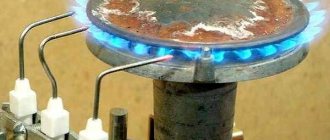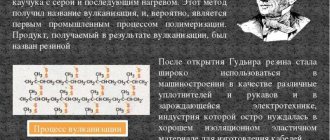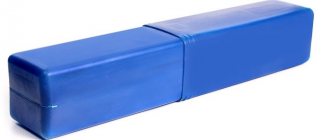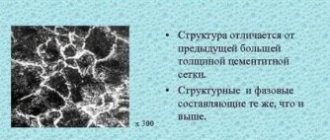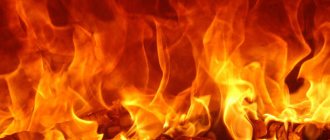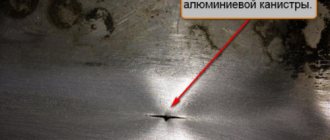Hi all!
I continue and finish the topic of fire and candles, started in recent articles. Today’s article will be theoretical - how candles appeared, how they are structured and work, what paraffin is, what is the temperature of the candle flame - we will analyze all this today.
A little history
Before we begin, I would like to advise those who are interested in the topic of candles and fire to read the wonderful book by the English scientist Michael Faraday, “The History of a Candle.” It can be easily found and downloaded for free on the Internet. It is this book that I will rely on in my today’s story about the structure of a candle and flame.
There are suggestions that candles first appeared in Ancient Egypt. The material for them was vegetable and animal fats, for example, beef or lamb lard. That is why in Rus' such candles were called tallow.
Wicks were first made from wood chips, then they began to use soaked reed core. In the same Egypt, papyrus, rolled into a tube and moistened with animal fat, was used to make a wick.
Later, already in the Middle Ages, wicks began to be made from tightly twisted or braided plant fibers. To make them burn better, they were moistened with solutions of nitrate or ammonium chloride.
Currently, the wick is made from cotton threads, which are impregnated with solutions of salts of phosphoric and boric acids. This is necessary so that the wick burns completely, without residue, without the formation of soot, or at least with as little as possible.
The candles themselves looked completely different from the current ones - bowls with fat poured into them. A little later, more or less similar forms of candles appeared - when they began to use scraps of the same reed, bamboo or reed. In general, who cares what. The ancient Romans put an end to this chaos, who figured out how to use the properties of animal fat. Since it hardens very quickly, shouldn’t we use it as a mold, without bothering with bowls and vessels made of reeds?
No sooner said than done. This is how candles appeared, which began to be called mocan or dipped. To make them, the wick was dipped in melted fat and waited until it hardened, covering the wick with a thin layer. Then they dipped (dipped) into the melted fat again, thus obtaining a second layer. And again, and again... This technology for making candles lasted right up to the 15th century.
It was in the 15th century that the restless French came up with the idea of using cast molds for candles. The wick was passed through a cone-shaped mold, filled with candle mass (except for wax, it was not suitable for this), waited until it hardened, after which the resulting product was shaken out, the result was a conical candle standing on a stable wide base.
Do not forget that until now we have been talking about tallow candles. Their obvious drawback was that they stank (you yourself know what an unpleasant odor heated animal fat gives off) and smoked mercilessly, covering everything in the home with soot.
The history of tallow candles ended only at the beginning of the 19th century, when the French chemist Michel Eugene Chevrolet synthesized stearin. With its advent, the era of soot and unpleasant odor ended. But a manufacturing problem arose - the dipping and casting technology was not suitable due to its low productivity.
The eternal opponents of the French - the British - came up with a new technology for making candles, where candles were automatically removed from the mold. Thanks to this idea, the production of candles increased sharply.
And when paraffin was obtained in 1850, a real holiday began for fire - all homes were lit with clean, odorless candles. Their drawback, however, was that paraffin has a low melting point, and such candles quickly melted, so they began to be made from a mixture of paraffin and stearin, resulting in a wonderful means for lighting homes.
But this turned out to be the swan song of the candle - technology did not stand still, first kerosene lamps appeared, and at the end of the 19th century - electric lamps. In 1879, Edison amazed the world with the incandescent light bulb.
We know how the matter ended. Electric lighting is everywhere now. The church probably uses the most candles. Also, candles remained as an attribute of romantic evenings and a tribute to energy drinks during sudden blackouts.
Once upon a time, about three years ago, I wrote a short story with which I participated in an online fantasy story competition. I didn’t even make it to the qualifying round, since my story didn’t fit into the terms of the competition, but oh well. All the same, it was just an accidental, completely spontaneous surge of my literary abilities, which died down as quickly as it began. I didn’t even try to write anything anymore.
So that the story doesn’t just lie “on the table” (on the computer’s hard drive, that is), I’m posting it here so it doesn’t go to waste. Take a look if you're interested, it's partly related to candles.
Progress
It is necessary to grind the raw material that is selected for work and expose it to a water bath. When using household candles, the wick is removed from them. In the case of using remnants of already used candles, they must be cleaned of dark soot. Stir the mixture slowly until it melts completely. The pre-prepared wick must be dipped into the mass several times so that it is well soaked.
It is necessary to add dye and flavoring to the composition. When using wax crayons, they must first be crushed using a fine grater. If two or more colors are used at once, a marbled color can be achieved. When the mass is divided into several parts and they are painted in different colors, it becomes possible to produce a multi-colored product.
The mold chosen for the craft must be lubricated with vegetable oil or dishwashing detergent. To secure the end of the wick, use a pencil, toothpick or stick. It is installed on the mold so that its free end lies approximately in its middle part and reaches the bottom. To make the design more reliable, the free part of the wick is equipped with a weight.
The melted mass is poured into the mold, after which you need to wait until it hardens completely. Next, the candle is pulled out by the wick. If you have difficulty removing the product, you need to immerse the mold in a vessel with hot water for a short time.
Stearine candles are decorated in different ways. You can place dried flowers and seeds on the edges of the form. Then carefully pour the heated mass into it. To make a coffee candle, you need to sprinkle the bottom of the mold with a layer of coffee beans, fill them with liquid mass, and put coffee beans on top again. Decoration with shells, beads and rhinestones is done after waiting for the product to harden and remove it from the mold. Decorative elements are attached using glue. Such a stearin candle, the photo of which is shown above, will give a holiday to you and your loved ones.
How does a candle work?
If you have a candle at home, try it by lighting the paraffin from which it is made. I mean, don’t light the wick, but try to light the paraffin itself, that is, the solid substance, the “body” of the candle. Happened?
Now light the fuse. Paraffin in contact with it melts, forming a depression around the wick filled with liquid paraffin. Now tilt the candle so that a puddle of liquid paraffin flows and lands on the wick. What happened?
We did this experience with our son when we “played with fire,” which I wrote about in two previous articles. Liquid paraffin extinguished the fire like ordinary water. Why is this happening?
The fact is that the wick, as I wrote above, is made of twisted or braided threads. Look, I specially took apart an ordinary store-bought candle. The wick in it is made of a braided “pigtail”.
Thus, the surface area of the wick is quite large. Liquid paraffin, melted at the base of the wick, impregnates the wick and rises through its capillaries into the combustion zone. There the temperature is quite high, the paraffin begins to evaporate, and it is these vapors that burn.
Thus, those who think that the wick is burning are mistaken; it is paraffin vapor that is burning. The wick serves as a kind of transport that delivers paraffin to the combustion zone - the paraffin melted from the heat rises up through the capillaries of the wick and burns.
Material
We will create miracles from stearin, paraffin or wax. For people starting to create candles for the first time, it is best to start their experiments with paraffin, since working with it is the easiest. Paraffin is either bought in a store or obtained from ordinary household white candles or their stubs.
It is also easy to obtain stearin from ordinary laundry soap. To do this, you need to grate the soap on a coarse grater or cut it with a knife. Next, the resulting shavings are placed in a metal container, completely filled with water and sent to a water bath to melt. After the soap has dissolved, it is removed from the heat, after which vinegar is added to the resulting composition. A mass of thick consistency will appear on the surface, which after complete cooling can be removed with a spoon. This substance is stearin. It should be rinsed under running water and wrapped in a clean cloth to remove excess moisture.
Flame properties
The flame has a cone shape due to the fact that rising air currents flow around it from all sides. The resulting combustion products - carbon dioxide and water - rise upward along with warm air heated by the fire, forming a tongue of flame. Air flows cool the outer surface of the candle, so you can safely hold it with your hand with almost no risk of getting burned. I say “almost” because the melting and flowing paraffin is still quite hot; the temperature here can be between 45-65 degrees. Of course, you won't get a fatal burn, but it won't be pleasant either.
As I already described in one of my previous articles, a candle flame consists of three fairly clearly visible zones of different colors. Here's a photo I took from the Internet:
The lower part of the flame is blue-violet. Here there are heavy paraffin vapors that are mixed with air. If you bring a match into this part, it will light up only after some time, not immediately. This part is the least hot, it has a temperature of 300-350 degrees. Some dodgers even demonstrate how to extinguish a candle with their fingers in this very part of the flame.
In the second part, the flame temperature reaches 500-800 degrees. The flame is brightest here due to the fact that this is where the decomposition of hydrocarbons occurs, the resulting particles of pure coal become very hot and emit light. It is because of this formed coal that a candle can sometimes smoke - if it does not burn completely for some reason. For example, there is little oxygen or the wick is made of the wrong material. Then the carbon falls out in the form of soot - soot.
The hottest part is the top. If you remember, in chemistry lessons at school, the teacher probably told you during practical and laboratory work that the test tube needs to be heated in the upper part of the flame, so it will heat up faster. The temperature here is 900-1500 degrees. In this outer part of the flame, hydrocarbons are completely burned to form carbon dioxide and water. This flame is practically invisible, it barely glows.
Why is there such a temperature range, for example 900-1500 degrees? This depends on the nature of the combustion substance, as well as the concentration and rate of supply of an oxidizing agent to it, for example, atmospheric oxygen or pure oxygen (for example, in laboratory conditions).
Classification
Flames are classified according to:
- state of aggregation of flammable substances: flame of gaseous, liquid, solid and airborne reagents;
- radiation: luminous, colored, colorless;
- state of the environment: fuel - oxidizer: diffusion, pre-mixed media;
- the nature of the movement of the reaction medium: laminar, turbulent, pulsating;
- temperature: cold, low temperature, high temperature;
- propagation speeds: slow, fast;
- height: short, long;
- visual perception: smoky, transparent, colored.
In a laminar diffusion flame, 3 zones (shells) can be distinguished. Inside the flame cone there are: a dark zone (300−350 °C), where combustion does not occur due to a lack of oxidizer; luminous zone where thermal decomposition of fuel and its partial combustion occurs (500−800 °C); barely luminous zone, which is characterized by the final combustion of fuel decomposition products and max. temperature (900−1500 °C). The flame temperature depends on the nature of the combustible substance and the intensity of the oxidizer supply.
Flame propagation through a pre-mixed medium (undisturbed) occurs from each point of the flame front normal to the flame surface. The value of such NSRP is the main characteristic of a flammable environment. It represents the minimum possible flame speed. NSRP values differ for different combustible mixtures - from 0.03 to 15 m/s.
The spread of flame through real-life gas-air mixtures is always complicated by external disturbing influences caused by gravity, convective flows, friction, etc. Therefore, the real flame propagation speeds always differ from normal ones. Depending on the nature of combustion, the speed of propagation of fires has the following. ranges of values: with deflagration combustion - up to 100 m/s; during explosive combustion - from 300 to 1000 m/s; during detonation combustion - St. 1000 m/s.
Oxidizing flame
Located in the upper, hottest part of the flame, where combustible substances are almost completely converted into combustion products. In this area of the flame there is an excess of oxygen and a lack of fuel, so substances placed in this zone are intensively oxidized.
Restorative flame
This is the part of the flame closest to the center or just below the center of the flame. In this area of the flame there is a lot of fuel and little oxygen for combustion, so if you introduce a substance containing oxygen into this part of the flame, the oxygen is taken away from the substance.
This can be illustrated using the example of the reduction reaction of barium sulfate BaSO4. Using a platinum loop, BaSO4 is taken and heated in the reducing part of the alcohol burner flame. In this case, barium sulfate is reduced and barium sulfide BaS is formed. That's why the flame is called restorative
.
The color of the flame depends on several factors. The most important are: temperature, the presence of microparticles and ions in the flame, which determine the emission spectrum.
It is not difficult to distinguish a wax candle from a paraffin candle. The first indicator will be the color of the candle. A wax candle is usually yellow in color. Color can vary from bright to dark to yellow-brown. Paraffin products are usually white and translucent. However, recently paraffin candles have often begun to be tinted with various dyes, so you should not focus solely on color.
You can try bending the candle a little. A wax candle bends freely, while a paraffin candle immediately breaks and falls into pieces.
You can also try cutting the candle with a knife. Wax is a malleable product, so it can be cut without difficulty, while solid paraffin candles crumble when exposed, since paraffin is a product of petroleum processing.
To check, light a candle. A wax candle never burns out without a residue; during the combustion process, small drops of wax are formed, flowing down, and the candle melts. A synthetic paraffin candle burns out completely. When wax burns, the air is filled with a light honey aroma, while paraffin candles have a pungent odor. To make sure your choice is correct, hold glass to a burning candle. A lit wax candle will not leave any residue on it. The flame of a paraffin candle leaves a dark stain of soot on the glass.
When stored for a long time, wax candles may become covered with a white coating. Paraffin candles are not affected by shelf life in any way.
- home
- About company
- Bee products
- Equipment for beekeepers
- Medical cosmetics
- Honey encyclopedia
- Cooperation
- Payment and delivery
- News
- Partners
- Contacts
All products of the Medok brand have undergone laboratory tests before going on sale and have documents confirming their quality. You no longer need to waste time going to stores and markets in search of quality products. Thanks to a wide range, affordable prices and fast delivery, the Medok online store is the best place for a comfortable and economical purchase!
Let's not confuse!
Let's not confuse wax, stearin and paraffin. These are three different substances.
Wax consists of esters of fatty acids of plant and animal origin.
Stearin is a waxy mixture of palmitic and stearic acids (sometimes there is also oleic acid), containing impurities of some other saturated and unsaturated fatty acids. Stearin is greasy to the touch (hence the name - from the Greek word stear - lard, fat), white or yellowish in color, melts at a temperature of 50-65 degrees.
Paraffin is a mixture of saturated hydrocarbons, also has a waxy consistency, colorless. It is lighter than water and melts in the temperature range of 45-65 degrees.
It is obtained mainly from oil refining. At room temperature it is chemically inert, but at high temperatures it burns to form carbon dioxide and water.
It is from this that candles are currently prepared on an industrial scale. If you want to make a candle yourself, you can find and buy wax, stearin, and paraffin for this in various online stores. In general, everything you want.
I won’t talk now about how to make a candle with your own hands. Perhaps I’ll write a separate article about this a little later.
DIY making
If in the old days candles were used to provide normal lighting in rooms, today stearine candles are increasingly gaining the role of an interesting decorative element that can create a romantic or festive atmosphere.
Nowadays, specialized stores sell many candle-making items, both the simplest and those striking the imagination with their whimsicality and originality. At the same time, such jewelry is quite amenable to self-production using simple materials that are freely available. Creating this decorative element with your own hands does not require too much financial expenditure and does not take much time. At the same time, by giving free rein to your indomitable imagination and putting your soul into your work, you will create an unprecedented thing that can give joy to you and those around you.
Market
In Europe, 90% of candles are made from paraffin. Let's consider the size of the constituent components of an industrial line. About 4% of products are household stearin candles, 0.5% of products are made from beeswax, the rest of the market share comes from products made from soybean and palm plant wax. In Sweden and Norway, stearin as a raw material for candles is much more widespread. Sometimes up to a quarter of stearin is present in paraffin products. Composite candles consisting of stearin, spermaceti, solid fats with bismuth and the addition of arsenic for strength are also common.
